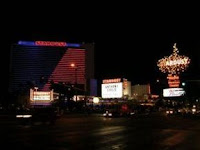Recollections of Childhood in Tiwi - #1
One of the more vivid recollections of my childhood was that of a Toyota Coaster, a mini bus servicing the big hotels in Legaspi— Mayon Imperial Hotel, La Trinidad Hotel and Albay Hotel—stopping by daily in front of our house, always bringing a bevy of multinational tourists led by a distinctly loud tour guide who descended the concrete steps towards the house, where artworks and products made of abaca and other native materials were mounted on a wall display in the sala.
My grandparents were known proponents of the local handicraft and cottage industries in Tiwi since the 1950s and were featured at the height of their business in the Philippines Herald, one of the leading newspapers at that time, in a section titled Little People Making Big. per said article- “they stopped the exodus of women from Bicolandia” which I will also write about in a future post.
Looking back? It was always fascinating as a child to watch the awestruck faces of those tourists as they examined the framed artworks as the din of the tourist guide’s voice reverberated throughout the small room as he explained the intricate process and the materials used in their construction.
Most of the artworks that were on display depicted the local hot springs, vignettes of early geothermal exploration, and of course, the usual touristy fare— rustic local scenes with the Mayon Volcano as a backdrop.
The tourists were a mix of various nationalities from all over the world, with the Australians and the Japanese comprising the majority.
My gran’pa Lolo Pito sold a lot of his artworks during the heyday of tourism in Tiwi (1970s to early 1980s). He used to keep a small notebook with pictures of his artworks and the names and address of his buyers catalogued in it. The list was a hodgepodge of various nationalities, with one of the more noteworthy entries being a Peruvian whose name now escapes me who bought several huge pieces that made me wonder how cumbersome it would be to transport them to South America. Now, whenever I remember that particular moment, I would envision a scene where I’d spot one of those frames hanging in a restaurant on the streets of Lima.
Unfortunately, I could not find that particular notebook the first time I went home to Tiwi from the United States. It was probably lost to the floods brought about by the annual monsoons and typhoons that constantly visit and plague Basag since forever.
After the wells of the hot springs dried up as a consequence of the geothermal operations in the 1980s, the sight of the mini bus and its tourist passengers visiting Tiwi suddenly became scarce, until one day they just stopped coming.
The tourism industry became anemic and the revenues it brought to Tiwi took a downturn. With a few exceptions, the souvenir shops have closed and the people behind them moved on to other endeavors.
And what happened to the tourist guide with the loud and distinct voice?
I have learned years later that his name was Aguinaldo ‘Gina’ Cariño; that he was a good friend of my grandfather — they were party-mates in the local branch of the Liberal Party under Senator Victor S. Ziga; that he became a Board Member of the Province of Albay during the time of Governor Romeo Salalima and in 2014 was honored by then-Governor Joey Salceda as one of the Outstanding Albayanos for his lifelong support and contributions to the tourism industry in the province, among other reasons.




Comments